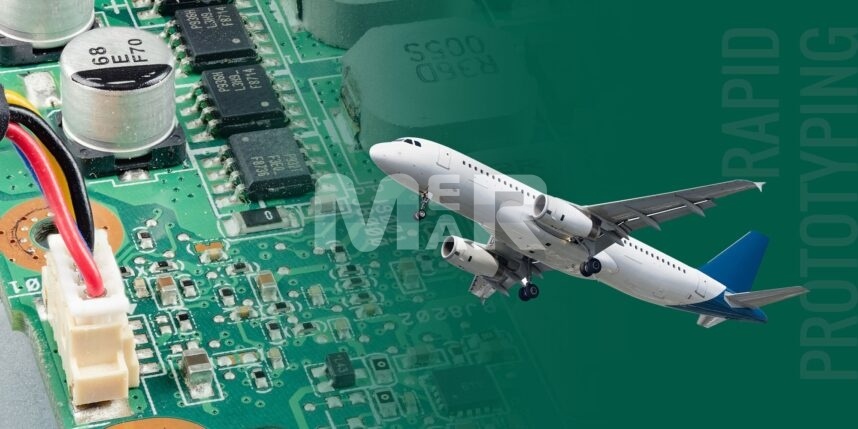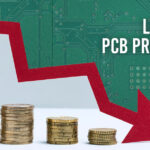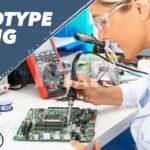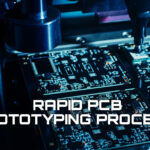The Importance of Rapid Prototyping in Aerospace Industry

Manufacturing sectors including the aerospace industry are prone to many challenges of time, cost, and technology. But in addition to these, the aerospace sector has some more significant regulatory requirements. The aerospace PCBs are expected to be of top-of-the-line performance and unmatched quality. Meeting all these requirements and demands can be challenging. For that reason, what we do is go for rapid prototyping! This offers numerous benefits for the aerospace industry to create new designs and cutting-edge technologies.
Engineers today are rapidly increasing the prototype services in multiple sectors of the economy including the aerospace sector. They design new prototype models and refine their ideas before committing to the final production designs. The rapid prototyping services are highly beneficial for the aerospace or aviation industry.
What is rapid prototyping?
Traditional prototyping has been the norm for years, but things are rapidly changing. Computer-aided designs along with new manufacturing techniques have taken over.
Rapid prototyping is the fast fabrication of any physical component, model, or assembly using computer-aided designs. This is usually done through 3D printing or additive manufacturing. When the rough design matches closely with the proposed finished product then it is said to be a high-fidelity prototype and if there are marked differences between the prototype and end product then it is a low fidelity prototype.
Importance of Rapid Prototyping
PCB manufacturers go for rapid prototyping that can aid in visualization, design & development of the manufacturing process before the final production. It is used for creating parts and models used by a wide range of applications across multiple industries like aerospace and medical device prototypes.
- There are numerous benefits of rapid prototyping like one can have a full picture of how products look and behave in the early stages of PCB design and manufacturing. This lets you perform changes or improvements to be implemented early in the process. The time taken for this varies from a few days to months.
- One of the main reasons why people go for rapid prototyping is that companies can enjoy greater freedom of design. They can create multiple models of designs, explore many more, without incurring massive costs.
- Rapid prototyping for aerospace electronics is a cost-effective way as it is an automated process that requires less manpower. It is one of the inexpensive ways and in fact easier to develop. By acting quickly and solving problems early on, you can reduce the risk of costly errors during the PCB manufacturing stage.
- Plus, it is also extremely precise as everything is automated and there is no scope for error. Being able to use computer-aided designs, the amount of material wastage is also reduced and doesn’t require special tools for PCB prototyping.
- PCB manufacturers embrace rapid prototyping as they will be able to cut down the time to market. They will be able to build and test the PCBs in small sections. This allows various departments to develop functional designs independently before combining them. This vastly shortens the testing time as well.
- Many electrical and mechanical engineers go for rapid prototyping as it makes the process of building geometrically complex parts with ease. This is so true in the case of aerospace systems. They work on multiple prototypes before they design things that fit perfectly.
- PCB designers can also confirm the size and shape dimensions before they go ahead with the manufacturing. They can see for themselves if all the components fit in the perfect manner and finish them while the engineers can test the performance and optimize the locations accordingly.
- Another benefit of PCB rapid prototyping is that companies can have the flexibility to test out different materials. Traditional prototyping processes limit the materials used for creating models. But with rapid prototyping, companies can enjoy a greater degree of flexibility creating several models out of different materials. This is more desirable for the aerospace industry.
- If you are aware that the materials used in aerospace applications are a bit on the high price. Rapid prototyping can provide you the flexibility for testing and evaluating alternatives on the less costly side before investing in tools and committing yourself to molding parts in the production materials.
- Rapid prototyping also helps designers to present new concepts to the board members, clients, and investors for easy understanding and approvals. The visualization process helps the designers to receive instant feedback from the stakeholders like customers and clients.
- Rapid prototyping is also an iterative process and it allows customer requirements to be incorporated into the designs easily and in a cost-effective manner. This also reduces the need to build customized products to be designed from the ground and at the same time providing greater choice and flexibility for the customers.
- Rapid prototyping is also a viable alternative to overseas manufacturing of prototype PCBs. OEMs can gain back control and keep it under their oversight. Many downsides like long turnaround times, different time zones, longer time-to-market, costly minimum order requirements, etc. can be overcome easily. With the same costs, OEMs can now invest in future technologies and stay competitive.
And if you are wondering what all aspects can have rapid prototyping, we would say everything! Rapid prototyping can contribute to nearly all aspects of aerospace design whether they are electronics, interior, and exterior components, or mechanical parts, etc. The aerospace industry can go for rapid prototyping right from the initial design to specialized production parts. This can even span to any repairs down the road.
The purpose of the entire process is to help the companies reduce their costs of designing and creating products by reducing the raw materials. The cost, of course, varies depending on several factors like size or volume of the part, surface finish, materials used, and what post-manufacture process is needed.
Conclusion
Rapid prototyping is a viable means to build next-generation electronic products and solutions to reduce costs and to market quickly. By adopting the latest technologies, we are capable of producing PCBs in lesser turnaround time even when the PCBs have multiple layers and several interconnects. Dense and functional multilayer PCBs can be built in as little as a few hours.
Mer-Mar Electronics is a trusted source for rapid prototyping. We offer extensive services that range from casting to 3D printing, design, functioning, mockups of individual components like control panels. We also offer prototyping services for designing single components with both flex and rigid capabilities. When compared to any overseas contracts, our in-house rapid prototyping is practically risk-free and we respect your intellectual property rights. If you are looking for a prototype or a mockup, you can always contact us.








